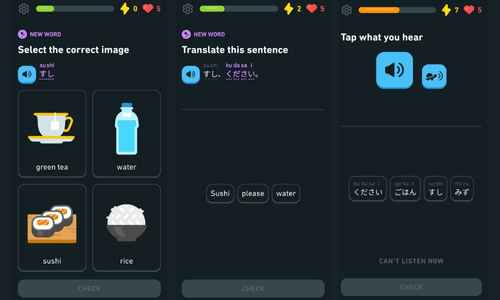E-learning solutions have become an essential part of the educational landscape in recent years. With the emergence of new technologies, educators and students now have access to a vast array of tools and resources that can enhance learning outcomes. However, with so many e-learning solutions available, choosing the right one can be a daunting task. In this article, we’ll explore some key factors to consider when selecting e-learning solutions that meet the needs of both educators and students.
Table of Contents
Understanding E-Learning Solutions
E-learning solutions are software-based platforms designed to facilitate and enhance the learning experience. These solutions can be used in a variety of educational settings, including K-12 schools, universities, and vocational institutions. Elearning solutions typically include a range of features such as online courses, virtual classrooms, interactive learning modules, and assessment tools. These solutions can be accessed via desktop or mobile devices, making them ideal for remote learning. E-Learning Solutions: The Future of Online Learning.
Key Considerations for Educators

When selecting an E-learning solution, educators should consider factors such as ease of use, the range of features available, and the level of support provided by the vendor. It’s also important to choose a solution that aligns with the learning objectives of the course or program. Educators should also ensure that the E-learning solution is scalable, allowing for future growth and expansion. Finally, educators should consider the cost of the E-learning solution and whether it represents value for money.
Key Considerations for Students

When selecting e-learning solutions, students should consider factors such as ease of use, accessibility, and the level of interactivity offered by the platform. It’s also important to choose a solution that provides a range of learning resources, including videos, simulations, and interactive quizzes. Students should also ensure that the E-learning solution is compatible with their devices, whether desktop or mobile. Finally, students should consider the cost of the E-learning solution and whether it provides value for money.
Types of E-Learning Solutions

There are several types of e-learning solutions available, including learning management systems (LMS), virtual learning environments (VLE), and online course providers. LMS platforms are designed to manage and deliver learning content, while VLEs provide a collaborative learning environment for students and educators. Online course providers offer a range of courses on specific topics or subjects. Each type of E-learning solution has its unique features and benefits, and educators and students should consider these when selecting a solution.
Assessing E-Learning Solutions
When assessing e-learning solutions, educators and students should consider several factors, including the platform’s usability, the quality of the content offered, and the level of support provided by the vendor. It’s also important to assess the scalability of the solution, particularly if it’s intended for use in a large educational institution. Other factors to consider include the level of interactivity offered, the availability of assessment tools, and the overall user experience.
Best Practices for Implementing E-Learning Solutions
Implementing e-learning solutions requires careful planning and consideration. Educators should ensure that the solution aligns with the learning objectives of the course or program and provides a user-friendly interface for students. It’s also important to provide adequate training for educators and students to ensure they can use the solution effectively. Additionally, educators should ensure that the E-learning solution integrates seamlessly with other educational technologies used within the institution.
Trends in E-Learning Solutions
The e-learning landscape is constantly evolving, with new technologies and trends emerging regularly. Some of the latest trends in eLearning solutions include the use of artificial intelligence (AI) and machine learning to personalize learning experiences, the incorporation of virtual reality (VR) and augmented reality (AR) technologies to create immersive learning environments, and the use of gamification to increase student engagement. As eLearning solutions continue to evolve, it’s important for educators and students to stay up-to-date with the latest trends to ensure they’re leveraging the full potential of these solutions.
Case Studies of Successful E-Learning Solutions
There are numerous examples of successful eLearning solutions in use today. For example, Coursera, an online course provider, offers a wide range of courses from leading universities and institutions around the world. Another example is Blackboard, an LMS platform used by many educational institutions to manage and deliver learning content. Additionally, Edmodo, a social learning network for K-12 schools, provides a collaborative learning environment for students and educators. By studying these successful eLearning solutions, educators and students can gain insights into best practices and effective implementation strategies.
Conclusion
In conclusion, choosing the right e-learning solution is essential for both educators and students to maximize the potential of these powerful tools. By considering key factors such as usability, features, scalability, and cost, educators and students can select the best solution for their needs. Additionally, by staying up-to-date with the latest trends and best practices in eLearning solutions, educators and students can continue to innovate and improve the learning experience. With the right e-learning solution, educators and students can unlock new possibilities and achieve their full potential.








